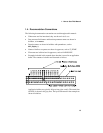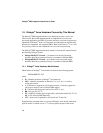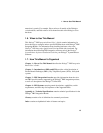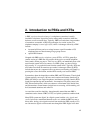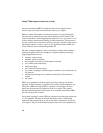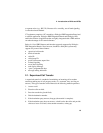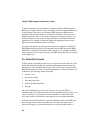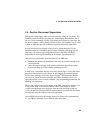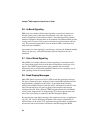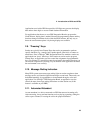Dialogic
®
PBX Integration Board User’s Guide
A supervised transfer can be implemented without a Dialogic
®
PBX Integration
Board (e.g., using hook flash), but the availability and ease of implementation can
be inconsistent. Choosing to use a Dialogic
®
PBX Integration Board and the
appropriate dial string can enable you to initiate a transfer the same way for all
supported switches. Also, by choosing to incorporate call progress analysis, you
can be positioned to offer consistent, high-performance call transfer features in
applications. For example, if during the transfer the application detects a busy
signal, the call is automatically sent to a mailbox.
In a supervised transfer, an incoming call answered by a channel on a Dialogic
®
PBX Integration Board will only be transferred after the PBX Integration Board
establishes a connection with another station (the call is not released to the PBX).
If the extension is busy or does not answer, the PBX Integration Board reconnects
to the original call.
2.2. Blind Call Transfer
A blind transfer is initiated the same way as a supervised transfer. However, after
dialing the destination number, the extension performing the transfer hangs up
and does not wait to determine the outcome of the call. The call is released to the
PBX. Blind transfers are used in voice mail applications. A blind call transfer can
be likened to the following manual operations:
1. Answer a call.
2. Put the call on hold.
3. Press the transfer key.
4. Dial the destination number.
5. Hang up.
The call is immediately sent to the new extension. It is up to the PBX to
determine what to do if the transferred call is not answered (because of busy or no
answer). Usually, if a transferred call is not answered it is routed back to the
voice mail system, and eventually to the operator (or an automated attendant).
A benefit offered by blind transfer is that the immediate release to the PBX frees
the voice processing resources to handle new calls rather than being used to
perform call progress. A potential drawback can occur when phone traffic is
20




